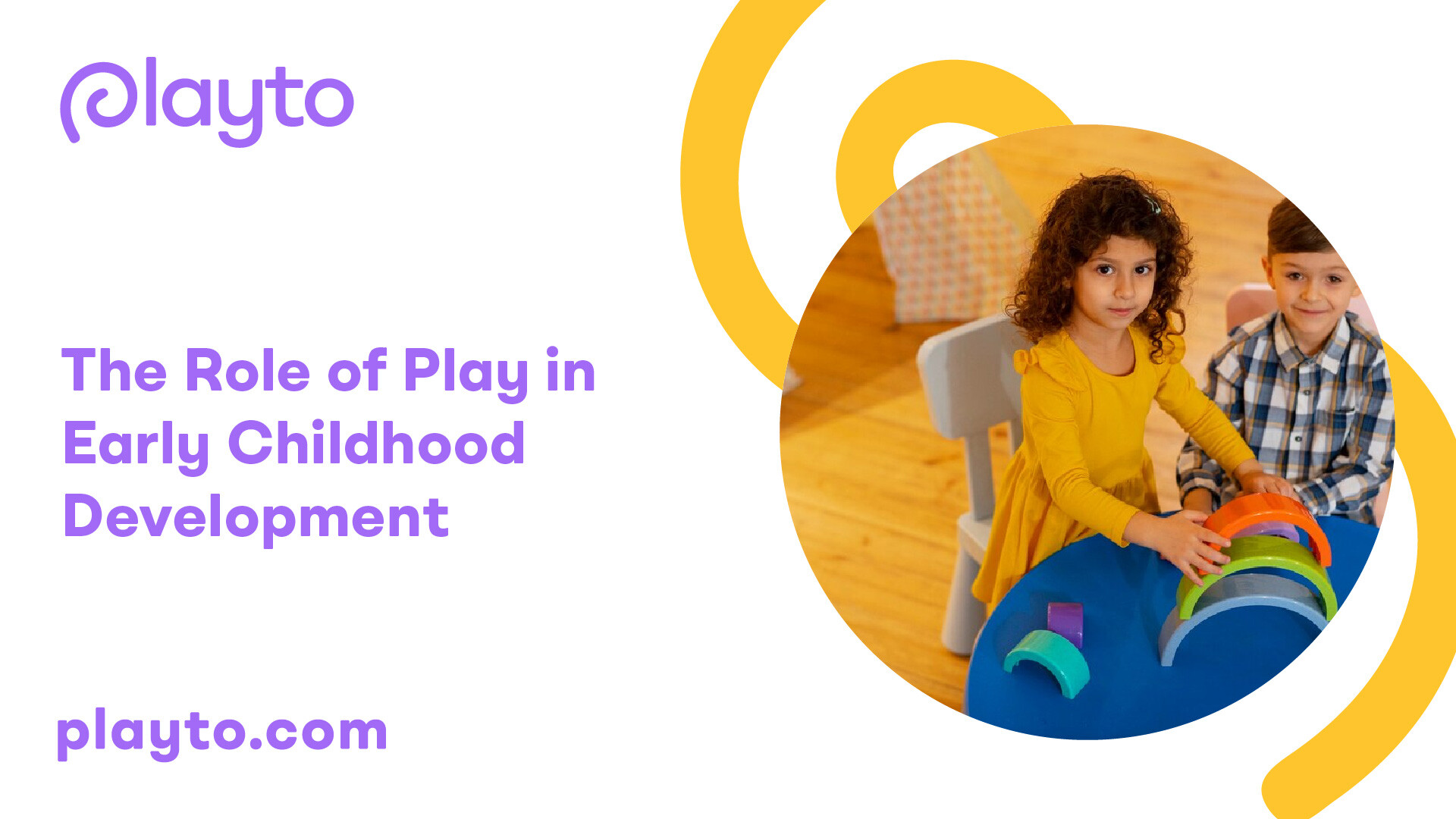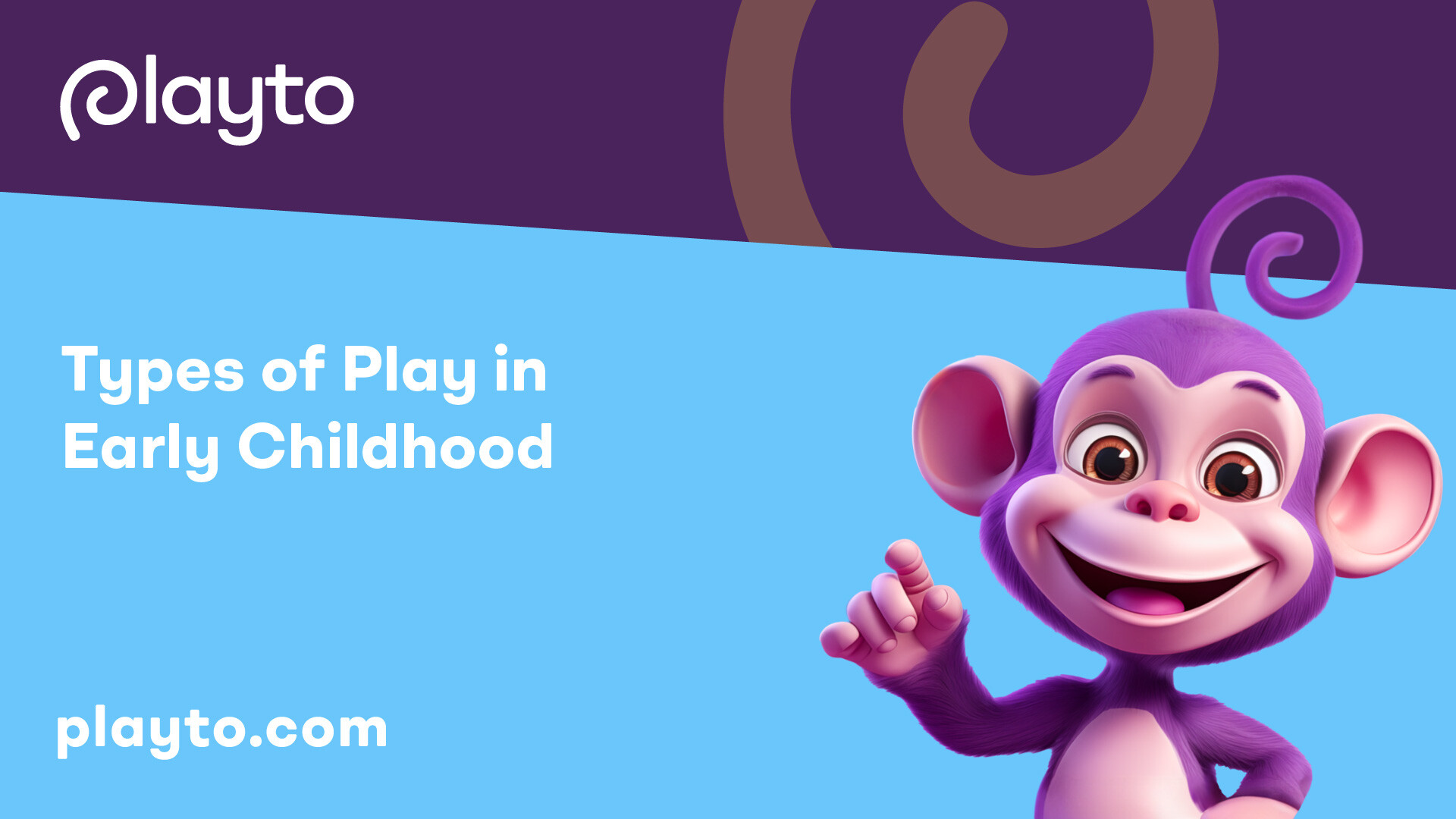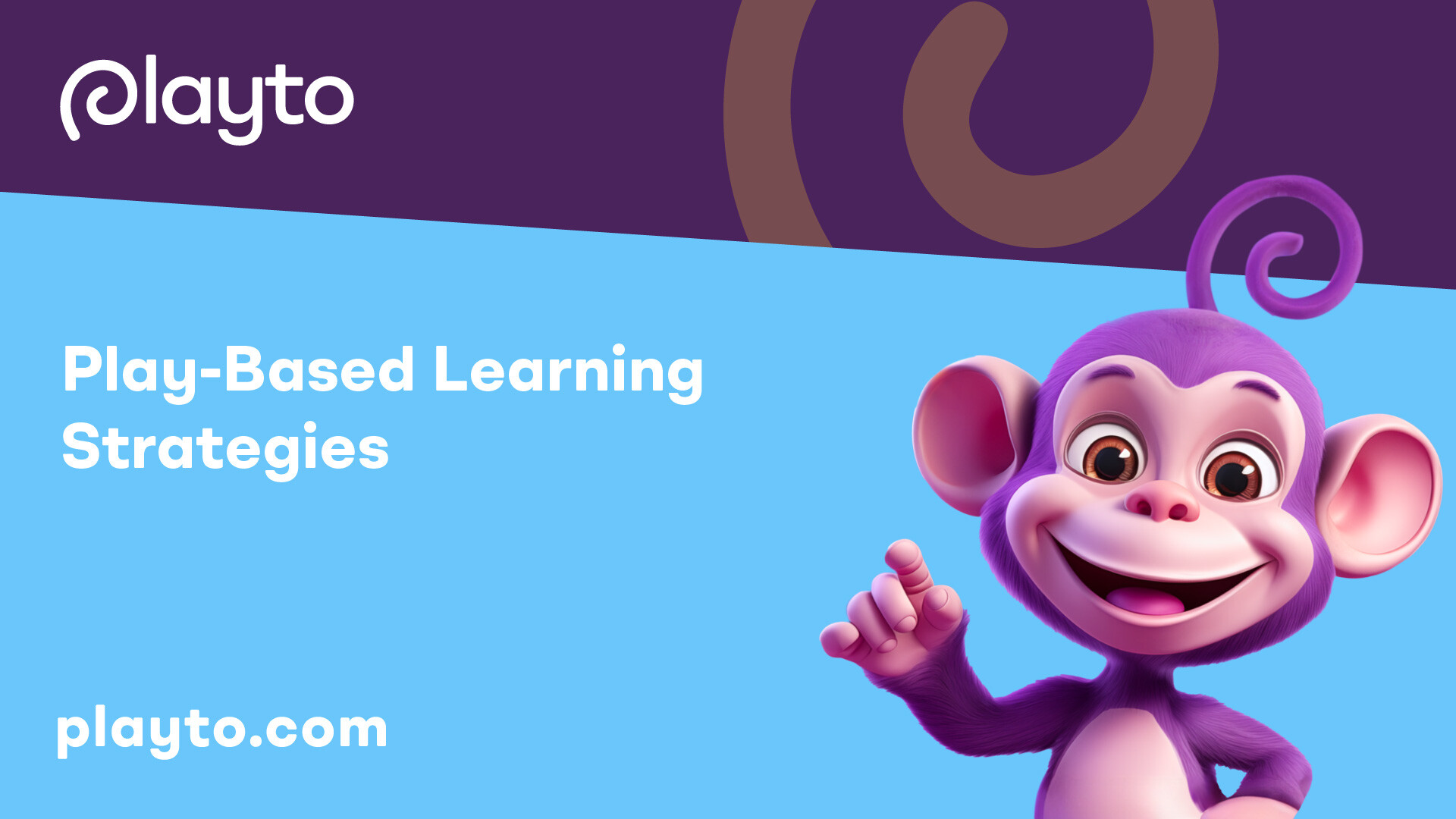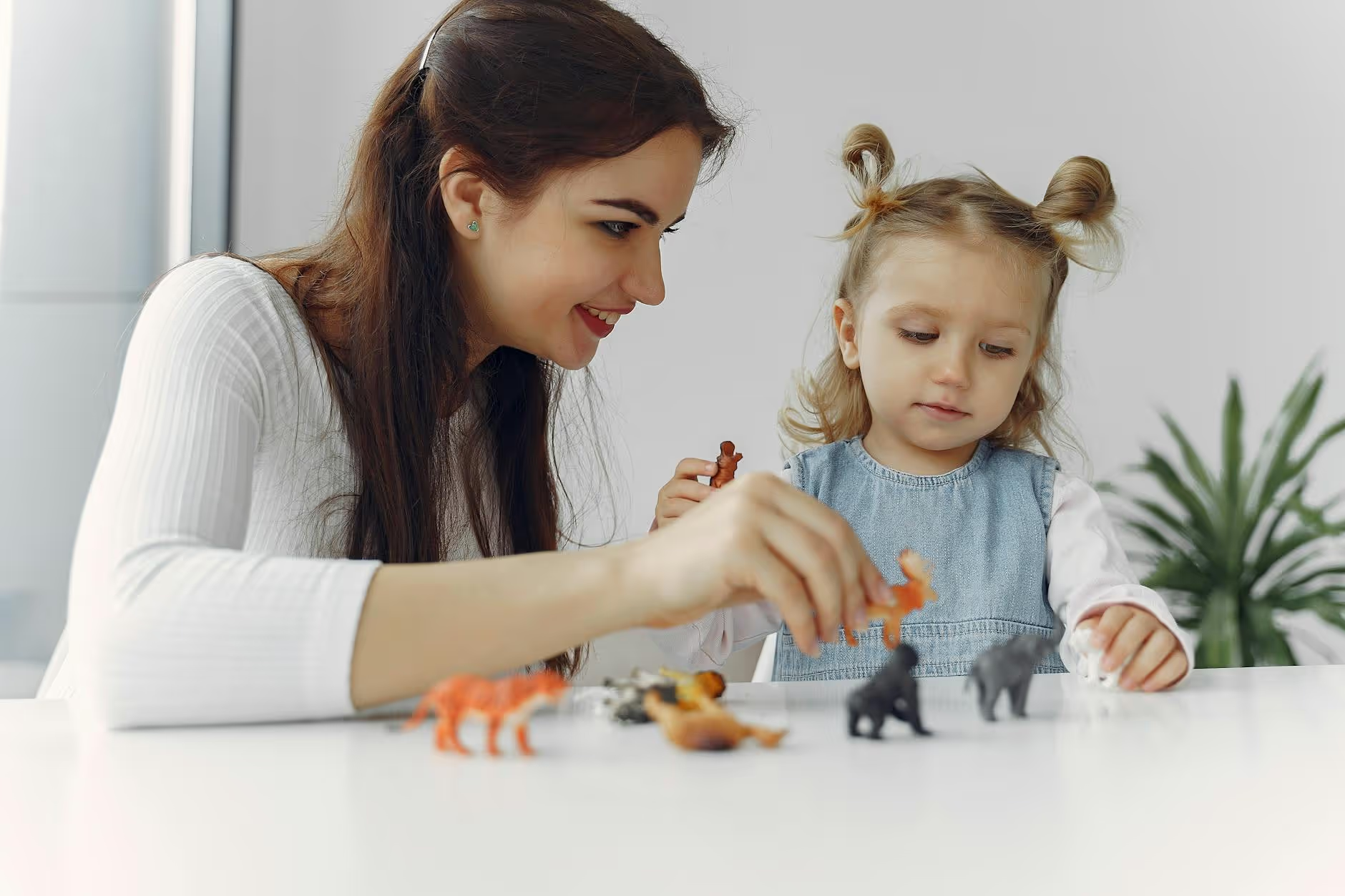Importance of Play in Early Childhood Development
In the field of early childhood education, there has been a shift in educational philosophy, recognizing the crucial role of play in the development of young children. The evolution of educational philosophy in the 1990s led to a focus on early reading and math, resulting in a reduction of free play and center time in favor of more structured curricula. However, research has shown that play, particularly playful learning, is a powerful tool for optimizing children's development and learning.

Evolution of Educational Philosophy
In the past, early childhood education emphasized the importance of play as a natural and essential way for children to learn and grow. However, the introduction of accountability measures and high-stakes testing led to a shift towards skills-focused curricula, resembling a more structured approach to learning. This shift overlooked the critical role of play in fostering children's creativity, problem-solving skills, and overall development.
Benefits of Playful Learning
Playful learning, which encompasses free play, guided play, and games, has been shown to enhance learning across various content areas, such as spatial learning, literacy, and mathematics. Free play, characterized as child-directed and voluntary, allows children to explore their interests, make decisions, and engage in imaginative play. This type of play fosters creativity, problem-solving, and social skills.
Guided play, on the other hand, involves some level of adult involvement to embed or extend additional learning opportunities within the play itself. It provides a balance between child-directed exploration and purposeful learning goals, resulting in increased learning outcomes compared to both free play and direct instruction [1].
Playful learning aligns with developmentally appropriate practice guidelines and supports a breadth of skills while promoting joy and creativity. It encourages active engagement, meaningful interactions, and iterative thinking, which are all key components of effective learning. By incorporating playful learning strategies, educators can create an engaging and enriching environment that optimally supports children's development and learning.
Recognizing the importance of play in early childhood development, early childhood educators strive to incorporate frequent opportunities for play in their teaching strategies. They design learning environments that provide a mix of self-directed play, guided play, and direct instruction, allowing children to make choices and explore their interests. Through this approach, educators maximize learning opportunities and promote holistic development for all children.
As the field of early childhood education continues to evolve, it is essential to recognize the power of play in supporting children's development across multiple domains. By embracing playful learning, educators can create a positive and effective learning environment that fosters children's joy, curiosity, and enthusiasm for learning.
Types of Play in Early Childhood
Play is a vital component of early childhood development, fostering various skills and promoting healthy growth. Throughout the preschool years, young children engage in different forms of play, each with its own unique benefits and contributions to their overall development. Let's explore three types of play commonly observed in early childhood: social and parallel play, object and sociodramatic play, and locomotor play.

Social and Parallel Play
Social play is usually the first form of play observed in young children, characterized by playful interactions with parents (up to age 2) and/or other children (from two years onwards). During social play, children engage in activities that involve sharing, taking turns, and engaging in cooperative play with their peers. This type of play helps develop important social skills, such as communication, empathy, and cooperation.
Parallel play, typically observed in children between the ages of 2 to 3, involves children playing alongside each other without significant interaction. While they may use similar toys and engage in similar activities, their play remains independent. Parallel play allows children to observe and learn from each other, developing their individual play skills while still benefiting from the presence of others.
Object and Sociodramatic Play
As cognitive skills develop, children start engaging in object and sociodramatic play. Object play involves using objects in various ways, such as building with blocks, stacking cups, or manipulating puzzles. This type of play promotes problem-solving skills, hand-eye coordination, and spatial awareness. It helps children explore cause and effect relationships and develop their fine motor skills.
Sociodramatic play, also known as pretend play or imaginative play, encourages children to engage in make-believe scenarios and take on different roles. By creating their own narratives and acting out various situations, children enhance their creativity, communication skills, and understanding of storytelling. Sociodramatic play allows children to express their emotions, develop empathy, and practice problem-solving in a safe and imaginative environment.
Locomotor Play
Locomotor play involves physical activities that promote movement and exercise. It includes activities such as running, jumping, climbing, and playing games that require physical exertion. Locomotor play contributes to the development of gross motor skills, coordination, balance, strength, and overall physical fitness. Play fighting is also common during locomotor play, especially among boys aged three to six. It should be noted that play fighting lacks the intent to harm, and the vast majority of incidents do not escalate into serious physical aggression.
By engaging in a variety of play types, children develop essential skills across social, emotional, cognitive, and physical domains. It's important to create an environment that supports and encourages these different types of play, allowing children to explore, learn, and grow. To learn more about the benefits of play and how to maximize learning opportunities through play, continue reading our article on encouraging play in early childhood.
Play-Based Learning Strategies
In the context of early childhood development, play-based learning is a widely recognized approach that promotes holistic growth and learning in young children. Play-based learning strategies encompass a range of methodologies, including free play and guided play, which are instrumental in fostering children's cognitive, social, and emotional development.

Free Play and Guided Play
Free play, characterized as child-directed, voluntary, internally motivated, and pleasurable, is frequently endorsed in play-based learning. During free play, children have the freedom to explore, experiment, and create their own experiences. This unstructured play allows children to develop problem-solving skills, creativity, and imagination. Studies have shown that child-directed play conditions promote more effective problem-solving behaviors compared to formal, teacher-directed settings. Moreover, free play with peers is crucial for developing social and emotional competencies, such as resolving conflicts and supporting emotional well-being.
On the other hand, guided play involves some level of adult involvement to embed or extend additional learning opportunities within the play itself. In guided play, teachers focus children's play around specific learning goals. This approach provides opportunities for children to engage in purposeful play that supports increased learning across content areas such as spatial learning, literacy, and mathematics. Guided play has been shown to result in increased learning relative to free play and direct instruction. Educators support and extend children’s play experiences by providing materials and resources based on careful observation of children’s play choices.
Role of Teachers in Playful Learning
Teachers play a crucial role in creating environments that introduce playful learning to help children master content and skills for future success. They serve as facilitators, guiding and supporting children's play-based learning experiences. Recognizing play as critical for children to experience joy and wonder, early childhood educators incorporate frequent opportunities for play in their teaching strategies. They plan learning environments that provide a mix of self-directed play, guided play, and direct instruction. By maximizing opportunities for children to choose materials, playmates, topics, and approaches, teachers empower children to take ownership of their learning experiences.
In the context of guided play, teachers design playful learning activities that harness children's interests, engage them in meaningful activities, and support their learning goals. These activities are carefully crafted to strike a balance between providing structure and allowing children to lead their own learning experiences. The role of the teacher is to scaffold and extend children's interest, engagement, and learning through intentional interactions and guidance. By providing specific guidance and support, educators enhance children's learning outcomes while fostering their creativity, critical thinking, and problem-solving abilities.
To integrate play-based learning with academic standards, educators face the challenge of finding ways to align mandated standards within a play-based pedagogy. An integrated approach that addresses both developmental and academic benefits is recommended, conceptualizing play-based learning as a continuum with varying levels of adult involvement in play. This approach ensures that play remains central to children's learning experiences while also meeting the requirements of academic standards.
By employing play-based learning strategies, early childhood educators create an environment that fosters children's natural curiosity, creativity, and love for learning. Through a combination of free play and guided play, teachers provide opportunities for children to explore, discover, and make meaning of the world around them, ultimately supporting their holistic development and laying a strong foundation for future academic success.
Social-Emotional Development through Play
Play in early childhood not only fosters fun and enjoyment but also plays a vital role in promoting social-emotional development. This section will explore two aspects of social-emotional development in children: emotional literacy and the development of independence.
Emotional Literacy in Children
Emotional literacy, the ability to label and talk about emotions, is a crucial aspect of social-emotional development in children. It helps them understand and express their own emotional experiences, as well as acknowledge and understand the emotions of others. This skill forms a foundation for healthy social interactions, problem-solving, and emotional regulation.
Through play, children have the opportunity to explore and express a wide range of emotions. They can role-play different scenarios, imitate others, and engage in imaginative play that allows them to navigate various emotional situations. By engaging in play that involves emotions, children develop a deeper understanding of their own feelings and those of others, enhancing their emotional literacy.
Developing Independence through Play
Independence is an essential aspect of social-emotional development in early childhood. As children develop a sense of independence, they become more capable of following daily routines, engaging in self-care tasks, and communicating about their experiences. This sense of independence contributes to their growing confidence and self-esteem.
Play provides an ideal context for developing independence. When children engage in play, they have the freedom to make choices, set their own rules, and take on leadership roles. Solitary play, in particular, allows children to explore their own interests and problem-solving abilities, fostering a sense of autonomy and independence.
Through play, children also learn important social skills such as sharing, taking turns, negotiating, and resolving conflicts. These skills contribute to their overall development of independence, as they learn to navigate social interactions and understand the perspectives of others.
By providing opportunities for play, parents, caregivers, and educators can support children's social-emotional development. Engaging in play with children, modeling appropriate behavior, and providing positive reinforcement for good behaviors are all effective strategies for fostering social-emotional skills. Additionally, creating a nurturing and supportive environment that encourages play and the development of independence can further enhance children's social-emotional growth.
In the next section, we will explore the role of play in academic development and how it can be integrated with academic standards to create a well-rounded learning experience for children.
For more information on daycare and related topics, you can explore articles such as daycare waitlists: tips for securing a spot, daycare for children with special needs, daycare subsidies and financial assistance options, and bilingual daycare programs: benefits and considerations.
Play and Academic Development
Play-based learning has been recognized as a valuable approach that supports both the developmental and academic aspects of a child's education. Research has shown that students in classrooms following a play-based curriculum outperformed students in control classrooms on general assessments of mathematical skills. Additionally, play-based literacy curricula that incorporate target vocabulary words into play contexts have led to increased word usage by children.
Academic Benefits of Play-Based Learning
Playful learning, which includes free play, guided play, and games, has been found to support increased learning across various content areas such as spatial learning, literacy, and mathematics. In fact, guided play, where teachers focus children's play around specific learning goals, has been shown to result in increased learning relative to both free play and direct instruction. By incorporating play into the curriculum, educators can create engaging and interactive learning experiences that enhance academic development.
To illustrate the academic benefits of play-based learning, here are a few examples:
- Spatial Learning: Playful activities like building blocks, puzzles, and construction play promote spatial awareness and problem-solving skills. Children can engage in hands-on experiences that encourage them to explore spatial relationships, visualize solutions, and develop critical thinking abilities.
- Literacy Development: Play-based learning provides opportunities for children to practice language and literacy skills. Through imaginative play, storytelling, and role-playing, children develop vocabulary, communication skills, and narrative abilities. Play contexts can be designed to incorporate target vocabulary words, leading to increased word usage by children.
- Mathematical Skills: Play-based learning can foster mathematical thinking and problem-solving abilities. Games, puzzles, and manipulative play materials allow children to explore concepts such as counting, sorting, patterns, and spatial reasoning in a hands-on and meaningful way. This approach helps children develop a strong foundation in mathematical skills.
Integrating Play with Academic Standards
Educators face the challenge of integrating mandated academic standards within play-based pedagogy. It is essential to conceptualize play-based learning as a continuum with varying levels of adult involvement in play. An integrated approach that addresses both developmental and academic benefits is recommended. This approach ensures that play-based learning aligns with developmentally appropriate practice guidelines while also supporting academic standards.
Direct instruction plays an important role in supporting children's learning within a play-based approach. Educators provide children with relevant academic vocabulary, point out relationships, help children recognize specific phenomena, and suggest alternative perspectives. By extending children's interests and learning in meaningful ways, direct instruction enhances the effectiveness of play-based learning.
To create a successful integration of play and academic standards, educators plan learning environments that provide a mix of self-directed play, guided play, and direct instruction. They maximize opportunities for children to choose materials, playmates, topics, and approaches throughout the day. By recognizing the importance of play in children's joy, wonder, and social-emotional development, educators create playful learning environments that support both developmental and academic growth.
By embracing play-based learning and integrating it with academic standards, educators can provide a holistic approach to education that fosters joy, creativity, and meaningful learning experiences for young children.
Encouraging Play in Early Childhood
To promote optimal early childhood development, it is crucial to create environments that prioritize play and provide ample opportunities for children to engage in various forms of play. Here, we will explore strategies for creating playful learning environments and maximizing learning opportunities through play.
Creating Playful Learning Environments
Recognizing the importance of play in children's lives, early childhood educators incorporate frequent opportunities for play in their teaching strategies. They plan learning environments that offer a balance of self-directed play, guided play, and direct instruction. By providing a mix of these play experiences, educators ensure that children have the freedom to choose their materials, playmates, topics, and approaches throughout the day.
To create a playful learning environment, educators should:
- Provide a variety of open-ended materials that encourage creativity, problem-solving, and imagination.
- Arrange the physical space in a way that allows for movement, exploration, and different types of play.
- Incorporate elements of nature, such as plants and natural materials, to connect children with the natural world.
- Create cozy and comfortable spaces where children can engage in quiet play or relaxation.
- Display children's artwork and creations to celebrate their accomplishments and foster a sense of pride.
By intentionally designing environments that support play, educators can enhance children's engagement, curiosity, and overall learning experience.
Maximizing Learning Opportunities through Play
While play is often seen as a recreational activity, it is also a powerful tool for learning and development. Educators can support and extend children's play experiences by providing materials and resources based on careful observation of their play choices. By doing so, they can engage children in meaningful and purposeful play that promotes learning [3].
Educators can maximize learning opportunities through play by:
- Facilitating conversations and asking open-ended questions that encourage critical thinking and problem-solving skills.
- Providing additional resources, such as books or props, to expand upon children's play themes and interests.
- Encouraging collaboration and social interaction among children during play to develop communication and teamwork skills.
- Offering gentle guidance and support to scaffold children's learning and help them explore new ideas.
- Incorporating academic content into play, such as counting during a pretend grocery store game or identifying shapes during block play.
By integrating play and learning, educators can create rich and meaningful experiences that foster children's cognitive, social, and emotional development.
Promoting play in early childhood is not only about providing a joyful and engaging experience for children but also about supporting their overall development and well-being. Through play, children develop important skills, such as problem-solving, creativity, and social-emotional competence. By creating playful learning environments and maximizing learning opportunities through play, educators can empower children to learn, grow, and thrive.
